“Proletarians Of All Countries, Unite!!!” By Aleksandr Petrovich Apsit (1919)

“Proletarians of all countries, unite!!!” by Aleksandr Petrovich Apsit (1919)
More Posts from Thxsdad and Others

Leonor Fini - Sultanas & Magicians - Two Jealous Sisters, ca. 1980
Argentine, 1908-1996
Ink on paper
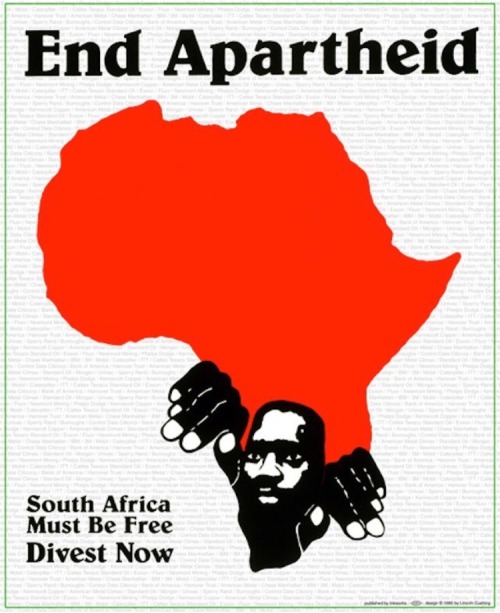




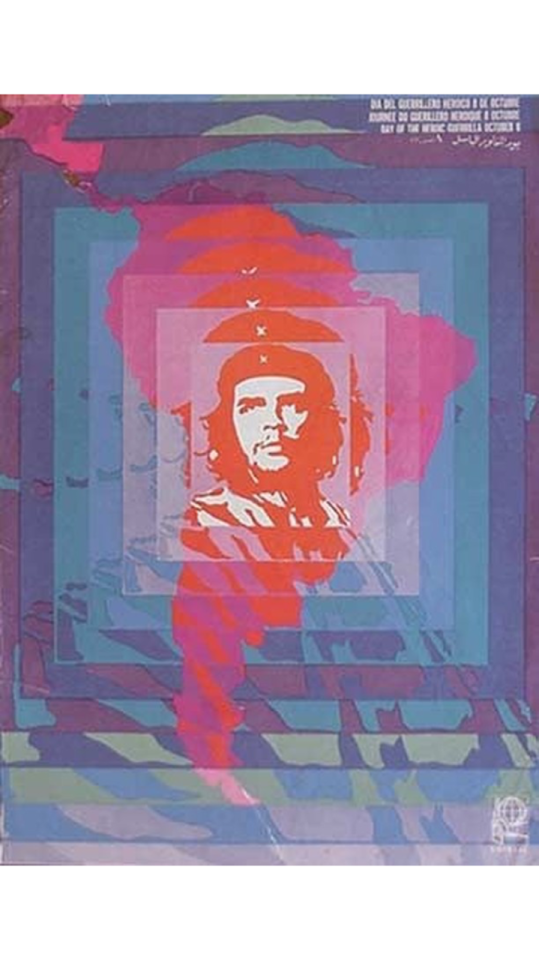
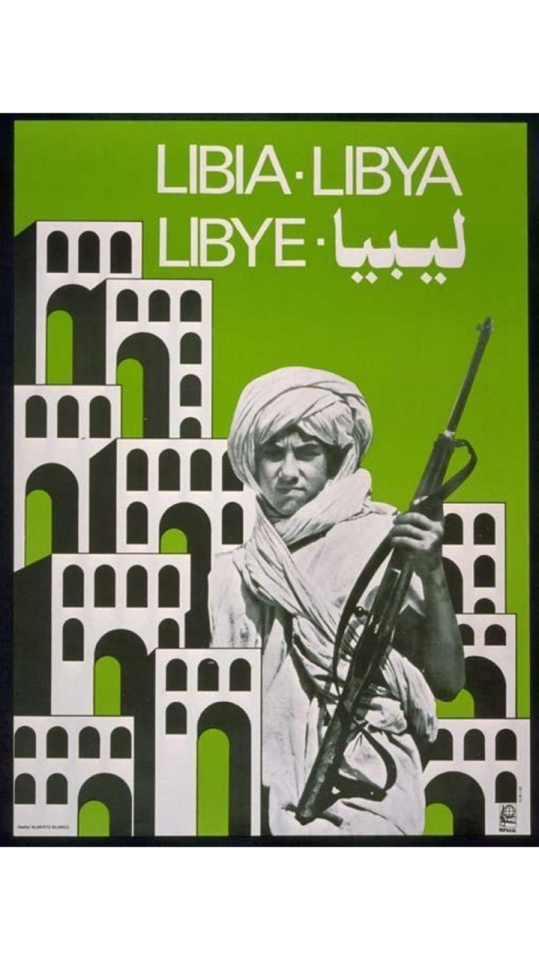
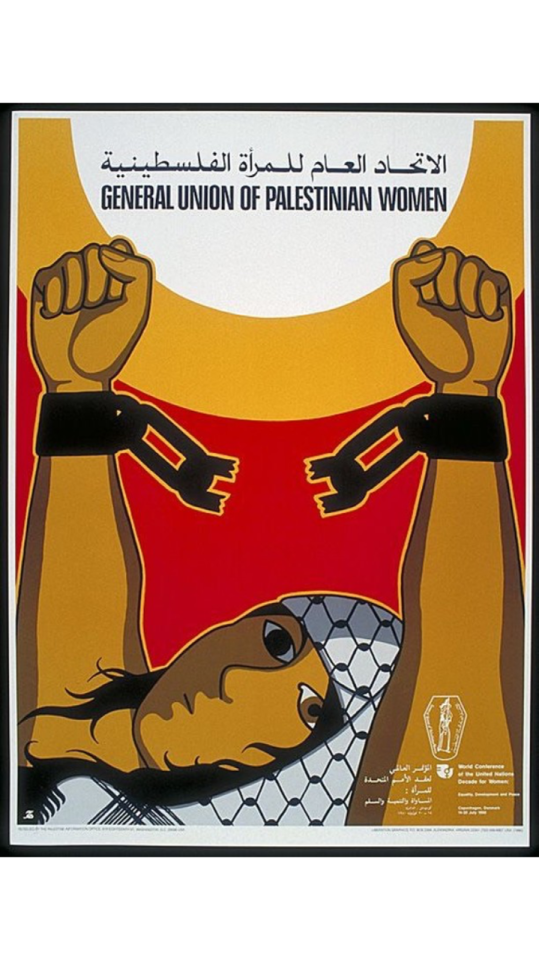

The Organization of Solidarity with the People of Asia, Africa and Latin America (Spanish: Organización de Solidaridad con los Pueblos de Asia, África y América Latina), abbreviated as OSPAAAL, is a Cuban political movement with the stated purpose of fighting globalisation, imperialism, neoliberalism and defending human rights.It publishes the magazine Tricontinental. The OSPAAAL was founded in Havana in January 1966, after the Tricontinental Conference, a meeting of leftist delegates from Guinea, the Congo, South Africa, Angola, Vietnam, Syria, North Korea, the Palestine Liberation Organization, Cuba, Puerto Rico, Chile and the Dominican Republic.
One of the main purposes of the organisation is to promote the causes of socialism and communism in the Third World; for example, OSPAAAL strongly supported Hugo Chávez. Social development, which the organization says is a human right, is a recurring theme in OSPAAAL publications.
From its foundation until the mid-1980s, OSPAAAL produced brightly coloured propaganda posters promoting their cause, however, financial difficulty and ink shortages forced the organization to stop producing these posters. However, in 2000, these posters began to be printed again.
These posters, as they intended to be internationalist, usually had their message written in Spanish, English, French, and Arabic. As opposed to being put up on walls around Cuba, these posters were instead folded up and stapled into copies of Tricontinental, so that they could be distributed internationally. This allowed OSPAAAL to send its message to its subscribers around the world.
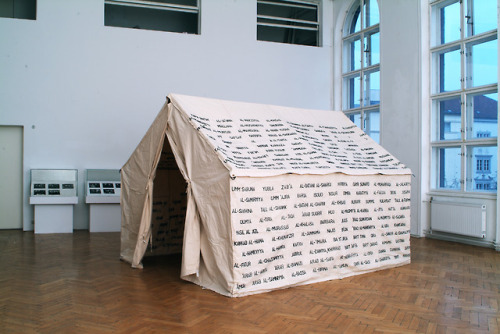
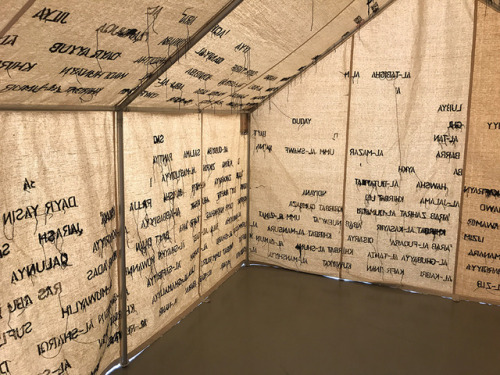
Emily Jacir
‘MEMORIAL TO 418 PALESTINIAN VILLAGES WHICH WERE DESTROYED, DEPOPULATED AND OCCUPIED BY ISRAEL IN 1948′
A refugee tent embroidered with the names of the 418 Palestinian villages.










I put the asoue dedications in OpenAI and had the ai write me a few, here are my favorites

India, Delhi, 1972. People sleeping near the Red Fort, by Ferdinando Scianna.

Hilma af Klint, 1916
more








kingdom hearts worlds: halloween town

If you ask someone to name five artists, they will likely name prominent male artists, but how many people can list five women artists? Throughout March’s Women’s History Month, we will be joining institutions around the world to answer this very question posed by the National Museum of Women in the Arts (NWMA). We will be featuring a woman artist every day this month, and highlighting artists in our current exhibition Half the Picture: A Feminist Look at the Collection which explores a wide range of art-making, focusing on enduring political subjects—encompassing gender, race, and class—that remain relevant today. The show is on view until March 31, 2019.
Together we hope to draw attention to the gender and race imbalance in the art world, inspire conversation and awareness, and hopefully add a few more women to everyone’s lists.
Yolanda Lopez’s art practice grew alongside her activism for the Chicanx student movement, which emerged in the late 1960s, and frequently centers the labor of women. Women’s Work Is Never Done is currently on view in Half the Picture: A Feminist Look at the Collection. In it, Lopez combines a 1965 image of labor leader Dolores Huerta proudly holding a strike poster with a group portrait of anonymous female farm workers dressed in protective gear for the heavy industrial work of a 1995 broccoli harvest. This International Women’s Day we celebrate the intellectual, organizing, and nourishing labor of the women depicted—and the work and lives of all trans and cis women around the world.
Yolanda M. López (American, born 1942). Woman’s Work is Never Done, from 10 x 10 Portfolio, 1995. Screenprint, sheet. Brooklyn Museum, Alfred T. White Fund, 1996.46.6. © artist or artist’s estate





Julia de Ruvo
-
 junkoid-gekkgekko liked this · 2 years ago
junkoid-gekkgekko liked this · 2 years ago -
 linksgf liked this · 2 years ago
linksgf liked this · 2 years ago -
 flaco305 liked this · 2 years ago
flaco305 liked this · 2 years ago -
 thxsdad reblogged this · 2 years ago
thxsdad reblogged this · 2 years ago -
 thxsdad liked this · 2 years ago
thxsdad liked this · 2 years ago -
 joshisnotarobot liked this · 2 years ago
joshisnotarobot liked this · 2 years ago -
 porkchopsammie reblogged this · 2 years ago
porkchopsammie reblogged this · 2 years ago -
 marxist-leninist-odaism reblogged this · 2 years ago
marxist-leninist-odaism reblogged this · 2 years ago
